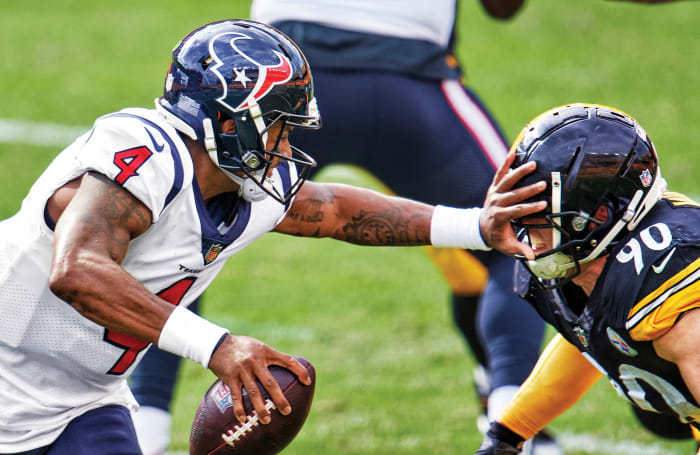QB Power
It was only a matter of time before the realization struck the upper crust of NFL quarterbacks: We don’t have to sit quietly and hope our Woebegone franchise finally figures out how to build a roster. We don’t have to keep up the façade that we’re merely employees. There’s no need for us to squander our athletic primes.
It took three superstar quarterbacks, over seven days in January, to embrace the notion that they no longer have to be anchored to a franchise for life. Aaron Rodgers’s MVP season—which had started with an unfulfilled request for upgraded receivers—ended with an upset loss to the Bucs on Championship Sunday; in a postgame press conference laced with subtle, coded messages, he talked about a future in which he’d no longer be part of the Packers. Four days after that, as the Texans prepared to officially announce an anonymous 65-year-old Ravens assistant as their new coach—and attempt to sell David Culley to an incensed fan base—Deshaun Watson’s rumored insistence that he won’t play another snap for Houston was confirmed publicly. Two nights later Matthew Stafford, a star talent long hamstrung by the Lions’ perennial dysfunction, had his request to move on granted: Detroit dealt him to the Rams for three draft picks and QB Jared Goff.
It was Watson’s demand for a trade, which arose out of a smoldering organizational tire fire in Houston and its owner Cal McNair’s inability to keep even the simplest of promises (We’ll keep you in the loop during our coaching search), that further eroded the remaining adhesive that was holding together the idea of a true “franchise” quarterback in the NFL right now. Rodgers, 37, despite earning his third MVP award in 2020, is entering the twilight of his career. Stafford, 33, is nearing the same phase. Watson, though, is 25, and just five months removed from signing an extension with an average annual value of $39 million, the second-highest in league history. Not since Carson Palmer forced his way out of Cincinnati nearly 10 years ago—holding out for half the 2011 season before being dealt to Oakland—has even a mid-level starting quarterback under contract demanded a trade. But rather than a quarterback’s playbook, Watson seemed to be taking a page out of an NBA superstar’s: The money doesn’t matter—if you won’t build a championship-caliber organization around me, send me to a team that will.
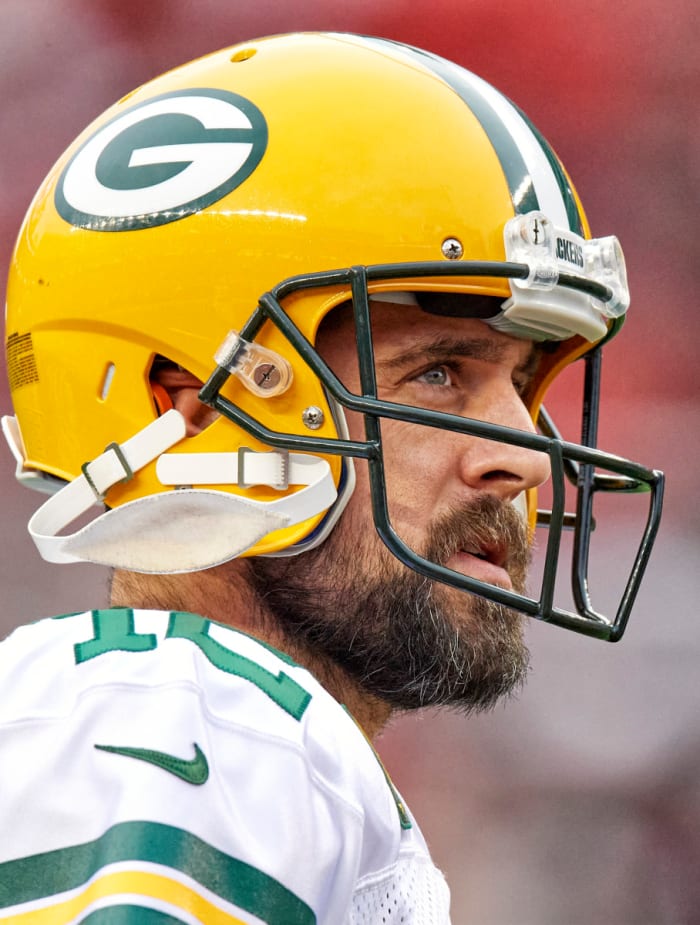
Threatening to Pack Up? Rodgers, whose unhappiness dates back to last April’s decision to draft another quarterback in the first round, sent a message about roster-building to the Green Bay front office.
John W. McDonough
One prominent agent who represents multiple top-tier passers in the NFL believes that quarterbacks’ collective realization of their own power will change the landscape around football. Along with Watson, Stafford and Rodgers, Dak Prescott remains unsigned, as does a slew of lower-tier bridge and developmental QBs. Goff is on the move, and any number of young quarterbacks whose teams have a chance to upgrade could suddenly burst from the board like plastic yellow shapes in a failed game of Perfection.
Mike Tannenbaum, the former Jets general manager who once added Brett Favre to his roster and was momentarily tangled in the Peyton Manning sweepstakes of 2012, says, “We could be on the precipice of a transformational era in the NFL. We could potentially see NBA-type movement. . . . You could be looking at a new era where [franchise] quarterbacks determine where they want to play.”
And the consequences will be felt in every QB room, sideline, front office and owner’s box across the league.
What will happen to football once the franchise quarterbacks start to roam? For fans with an interest in other sports, it will feel eerily familiar—for NFL clubs, completely foreign.
Tannenbaum notes, for example, that some salary-cap tricks could become commonplace. Hypothetically, a quarterback who wants to leave town could propose a creative arrangement to his current and future team, perhaps repaying his bonus money, then have it reimbursed by the new club after the start of the following league year. This would help mitigate some of the “dead money” cap charge (a term used for the amount of money a club already owes a player but has not been reflected on a given year’s cap) endured by the trading team. That dead money is the main reason franchise quarterback trade conversations are typically reserved for Madden and subreddits.
While coaches will have to become recruiters of the league’s premium talent, stars like Watson could become kingmakers simply by tapping the promising coaches they would like to work with. (Watson’s recommendation that the Texans interview Robert Saleh fueled rumors that the Jets, Saleh’s new team, were clearly a preferred trade destination for the signal-caller.) These trends could make even more valuable the quarterback-development credentials of coaches like Sean Payton in New Orleans, Kyle Shanahan in San Francisco and Sean McVay in Los Angeles.
Owners, though, will endure the most seismic shift. The root of Watson’s unhappiness in Houston, for example, lies with McNair, who has failed to communicate with Watson on multiple franchise-altering decisions. After finding out via social media that star receiver and close friend DeAndre Hopkins had been traded to Arizona last March, Watson was promised a chance to give input on the team’s GM and head-coaching searches. Of the two coaches he suggested, one wasn’t interviewed by the Texans until late in the process (Chiefs offensive coordinator Eric Bieniemy) and the other wasn’t interviewed at all (Saleh, the 49ers defensive coordinator who interviewed with every other team that had a vacancy). And, like with the Hopkins trade, Watson found out about the hiring of new GM Nick Caserio in January via social media.
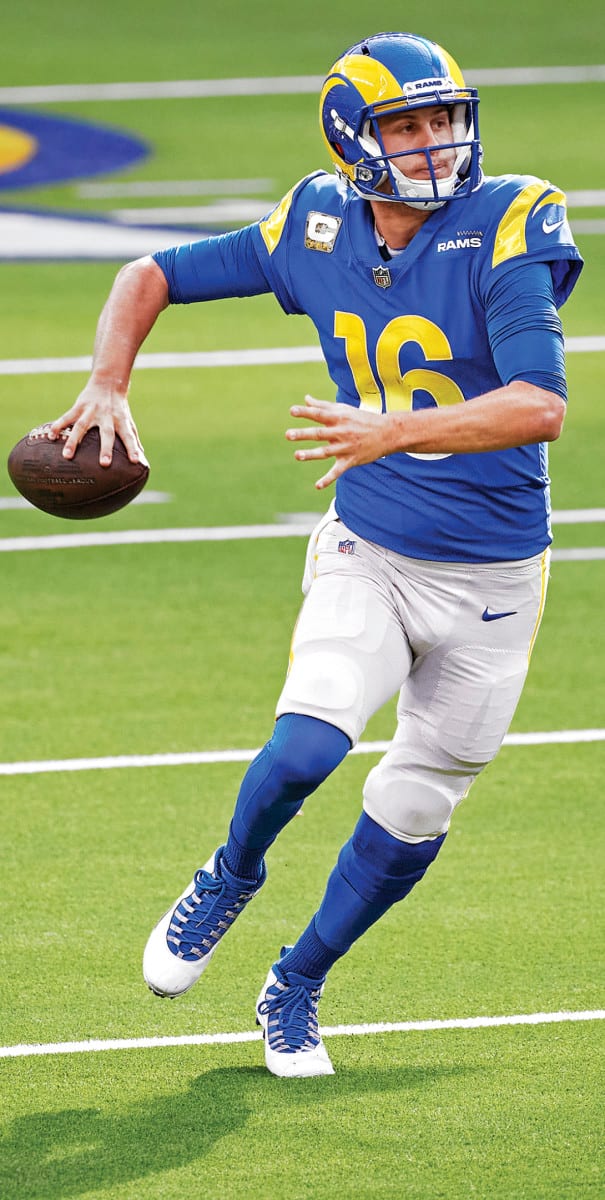
Leaving Los Angeles Less than two years after he started in Super Bowl LIII, Goff was shipped to Detroit when the Rams found an opportunity to upgrade under center.
John W. McDonough
McNair can now bend to the whims of his quarterback or endure months of bad press and the inevitable moment when Watson loudly, finally forces his way out, sullying Houston as a future free-agent destination. Making a franchise a more hospitable place is no longer the problem of people owners constantly hire and fire. It is through their own words and actions—a new level of accountability.

SAM DARNOLD Age: 23 The third pick of the 2018 draft has battled injuries and failed to meet expectations. Even if Deshaun Watson doesn’t end up in green, the Jets hold the No. 2 choice in a QB-rich draft.
David E. Klutho

JIMMY GAROPPOLO Age: 29 In 2018 he signed the then-richest contract in NFL history and two years later started in the Super Bowl. But injuries and inconsistency have the 49ers eyeing an upgrade.

TUA TAGOVAILOA Age: 22 The Dolphins broke him in slowly, then pulled him in favor of veteran Ryan Fitzpatrick twice. With the third pick (via Houston), they could find a new QB of the future.

CARSON WENTZ Age: 28 In 2017 a torn ACL ended an MVP campaign. (Nick Foles led Philly to a title.) The Eagles gave him a big contract in 2019 but ended up benching him last December.
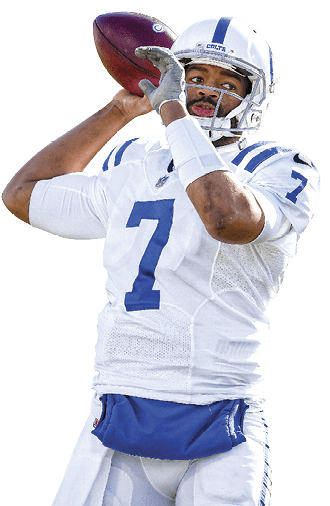
JACOBY BRISSETT Age: 28 After Andrew Luck’s retirement, Brissett shone early in 2019 before fading. The Colts went with Philip Rivers in 2020; his retirement could open the door for Brissett again.
Rich Barnes/USA TODAY Sports
While the drama unfolded in Houston, Les Snead, the general manager of the Rams, hinted during a postseason press conference that Goff’s spot on the roster was tenuous at best despite his signing a long-term contract extension on the eve of the 2019 season, seven months after he led the Rams to a Super Bowl appearance. Less than 17 months after signing that deal, the 26-year-old Goff is headed to Detroit, where he will presumably serve as a bridge to the Lions’ next franchise QB. And in Philadelphia, there is still no assurance that a rift between 28-year-old Carson Wentz and the Eagles was any closer to being mended. An MVP candidate in 2017 before a torn ACL forced him to watch a Nick Foles–led Super Bowl run from the sideline, Wentz was benched in December, and a month later the team fired coach Doug Pederson. Wentz signed his mega-extension a few months before Goff signed his; neither deal kicks in until the 2021 league year begins in March. In other words, Goff was shipped out before the long-term commitment he and the Rams made to one another even began—Philly could do the same to Wentz.
Goff’s fate was a reminder that no matter the commitment you the team has made to you, it can back out—that’s especially true for recent draft picks on much smaller contracts. Take Jets quarterback Sam Darnold, who one minute is on a developmental track toward franchise status, then a few months later is mentioned as trade bait for Watson. The organization goes from showering you with praise to discussing you in legalese, like an item to be divided in a court-ordered separation.Goff’s fate was a reminder that no matter the commitment you think the team has made to you, it can back out—that’s especially true for recent draft picks on much smaller contracts.
Take Jets quarterback Sam Darnold, who one minute is on a developmental track toward franchise status, then a few months later is mentioned as trade bait for Watson. The organization goes from showering you with praise to discussing you in legalese, like an item to be divided in a court-ordered separation.
But the Goff trade is also a reminder that there’s no such thing as an untradeable contract. It cuts both ways: If teams, like a devious accountant, can manipulate the salary cap to their advantage, players can use their leverage to convince a team to let them out of a long-term commitment, contract be damned.
Quarterback mobility creates dueling possibilities for football in the near future. One is a kind of top-heavy dystopian wasteland, where all the best players migrate to a few places already glutted with the type of resources needed to draw in top-tier stars. Not unlike in the NBA, the idea of a tattered NFL franchise picking itself up from rock bottom becomes more of a distant fairy tale, and the outlier franchises slowly starve for relevance and success. Like the era when a string of free agents signed discounted deals to join the Patriots, the few places capable and interested in amassing star power are continuously rewarded.
A side effect of quarterback movement, experts point out, is that the middle class—the players at any position who do not have affordable rookie contracts or the talent to warrant expensive veteran deals—will further shrink as teams try to create enough cap space to lure top quarterbacks. This year, a season when the salary cap could dwindle or remain flat, could be especially hazardous for those players on teams needing to sign or trade for a quarterback.
The other world is more harmonious; a world in which owners create a level of stability; in which general managers, coaches and their staffers aren’t on a constant quest to either gain power or secure what is already won; in which the building becomes the kind of place where people want to work. Corporations and small businesses across the U.S. fight for top employees all the time with culture creation. No longer will the NFL be immune to basic human practices. Imagine the owner who, from the moment they draft the next Deshaun Watson, is terrified at the prospect of losing him.
“It’s part and parcel of running a good organization,” Tannenbaum says. “A good leader is a good listener. Make sure your place is one where players want to play, where they’re happy and fulfilled and being given the best chance to maximize their career.”
So what happens when the quarterbacks start to roam? Will we find ourselves, collectively, as a football-viewing universe, happier? Will we laud its progressiveness, or will we weep for the days of the “hometown hero” under center? Will it please the younger generation, who grew up less interested in season tickets and more fascinated by constantly shifting Madden rosters and daily fantasy lineups? Will it alienate football’s already hot-and-cold relationship with the older portion of the fan base, which prefers players stay in place? The answer is undoubtedly yes. For the coaches, owners and fans who have a franchise quarterback they love, now might be a good time to let them know just how much.
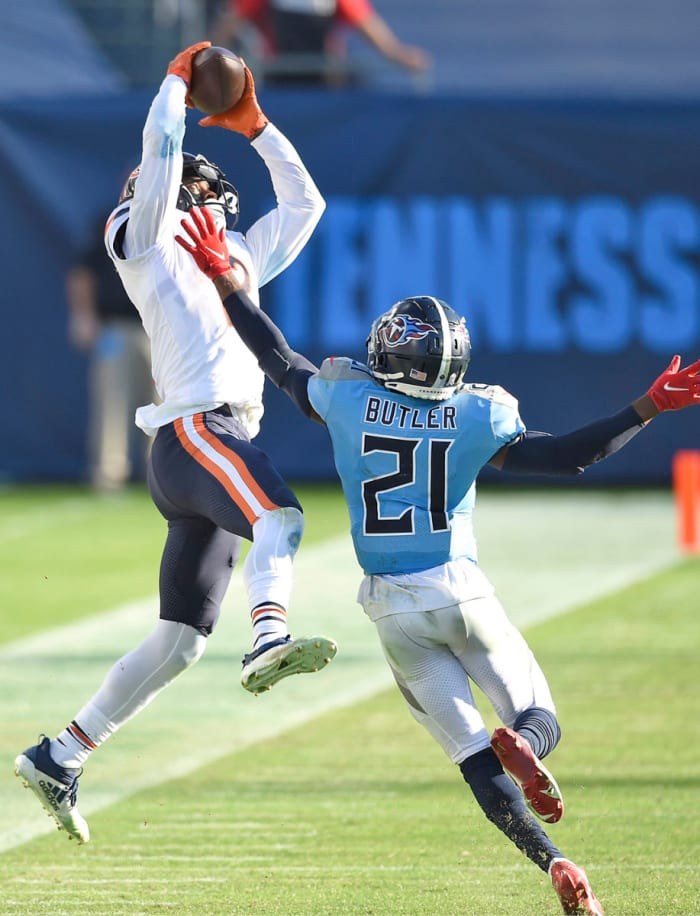
Bear Market Robinson (left) posted back-to-back 1,000-yard seasons in Chicago but failed all the same to get a new contract.
George Walker IV/Tennessean.com/USA TODAY Network
At some point, after any one of the 200 catches Allen Robinson made despite bottom-of-the-league quarterback play the past two seasons, the Bears surely realized their star receiver and pending free agent’s value. However, their failure to sign him to a new contract last fall suggests the team also noticed what was happening elsewhere: The rookie wage scale has created incredible bargains at the position.
For instance, take two young star receivers who torched Chicago for 100-yard games last year: Minnesota’s Justin Jefferson and Tennessee’s A.J. Brown. While the 27-year-old Robinson brings a comparable talent level, the difference in price is immense. Robinson signed a three-year, $42 million deal with the Bears before the 2018 season. But because of the rookie wage scale, the entirety of Jefferson’s four-year contract ($13.1 million, excluding a fifth-year option) is less than what the Bears paid Robinson annually. Meanwhile Brown, who fell to 51st in the 2019 draft, is in line for just $5.6 million total over his first four seasons—with no chance to renegotiate until after his third year, per terms of the CBA. And he isn’t an anomaly—bona fide No. 1 receivers DK Metcalf (Seattle) and Terry McLaurin (Washington), also 2019 draftees, earn even less.
When teams look at the 2021 draft, they see potential for similar bargains. The 2020 wideout class was considered historically great, and this year’s group is gaining similar repute. The market gets further squeezed due to aging but effective (and affordable) vets Marvin Jones (Lions), Sammy Watkins (Chiefs), T.Y. Hilton (Colts) and A.J. Green (Bengals) set for free agency. Value will become crucial if the salary cap doesn’t rise because of lost revenue from the pandemic.
Along with Robinson, Kenny Golladay of the Lions, one of the league’s top deep threats, failed to work out a long-term deal last season. Chris Godwin, who averaged a team-leading 70.0 yards per game for the Bucs, will hit free agency contending with a flooded market, incoming talent and Tampa Bay’s investment in teammate Mike Evans. (The Bucs might also be more willing to re-sign Antonio Brown, a friend of Tom Brady’s whose price will be discounted due to—among other off-field issues—a December civil trial for sexual assault.) Pittsburgh’s JuJu Smith-Schuster, Tennessee’s Corey Davis, Houston’s Will Fuller, and Carolina’s Curtis Samuel are all expecting rich second contracts, but a few will have it slip through their fingers.
